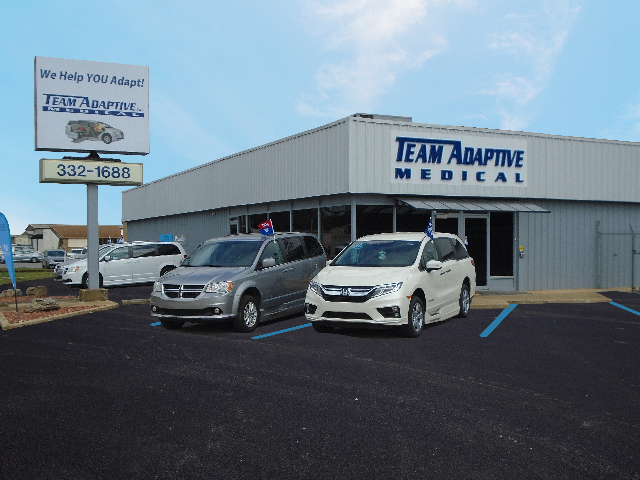
The Ultimate Guide to Understanding China TPN Bags: Benefits, Uses, and Innovations
In recent years, the medical packaging industry has witnessed significant advancements, particularly in the realm of total parenteral nutrition (TPN) solutions. Among these innovations, the China TPN Bag has emerged as a pivotal player, offering healthcare providers an efficient and effective means to deliver nutrition intravenously. According to a report by Grand View Research, the global TPN market is projected to reach USD 4.3 billion by 2027, driven by the increasing prevalence of chronic diseases and the rising demand for home healthcare services. The China TPN Bag not only enhances the safety and stability of nutrient delivery but also incorporates state-of-the-art technologies that ensure optimal product integrity. This article explores the myriad benefits, diverse uses, and ongoing innovations surrounding China TPN Bags, aiming to equip professionals in the healthcare sector with essential insights to optimize patient care.
Key Advantages of TPN Bags in Modern Healthcare
Total Parenteral Nutrition (TPN) bags have become an essential component in modern healthcare, especially for patients who cannot obtain adequate nourishment through traditional means. One of the key advantages of TPN bags is their ability to deliver customized nutritional formulations directly into the bloodstream, ensuring that patients receive the necessary macronutrients, vitamins, and minerals. This targeted approach is particularly beneficial for individuals with gastrointestinal disorders, post-surgery recovery, or chronic illnesses where oral intake is compromised.
Moreover, TPN bags enhance patient safety and comfort by providing a sterile environment for nutrient delivery. With advancements in technology, contemporary TPN solutions include innovations such as smart infusion pumps that monitor and adjust nutrient flow rates in real time, minimizing the risk of complications. These innovations not only improve the effectiveness of nutritional therapy but also allow for more flexibility in managing patient care. As healthcare continues to prioritize individualized treatment plans, the relevance and utility of TPN bags in clinical settings are set to grow, leading to improved patient outcomes and enhanced quality of life.
Diverse Applications of TPN Bags in Nutritional Therapy
Total Parenteral Nutrition (TPN) bags play a crucial role in various nutritional therapies, especially for patients who cannot take food orally. Their diverse applications include supporting individuals with gastrointestinal disorders, patients undergoing cancer treatments, and those with severe malnutrition. TPN bags are designed to deliver essential nutrients directly into the bloodstream, providing a lifeline for patients needing intensive nutritional support. This method is vital for maintaining bodily functions and improving overall health outcomes when traditional feeding routes are not viable.
In addition to their clinical uses, TPN bags have seen innovative developments to enhance their effectiveness and ease of use. Recent advancements include smart TPN systems that allow healthcare providers to monitor nutrient delivery and patient response in real-time. These innovations not only improve the precision of nutrient administration but also minimize potential complications, such as infection or nutrient imbalances. The ability to customize TPN solutions based on individual patient needs further underscores the flexibility and importance of TPN bags in nutritional therapy, showcasing their essential role in modern medical care.
The Benefits of TPN Bags in Nutritional Therapy
Innovative Technologies Revolutionizing TPN Bag Design
In recent years, the design of Total Parenteral Nutrition (TPN) bags has witnessed significant advancements driven by innovative technologies. One of the most notable improvements is the incorporation of smart sensors in TPN bags, allowing for real-time monitoring of nutrient levels and degradation. A report by MarketsandMarkets projects the smart medical devices market will reach USD 50.8 billion by 2025, spotlighting the growing demand for such technologies in healthcare delivery systems, including TPN solutions.
Another transformative innovation is the development of biocompatible materials used in TPN bag manufacturing. These materials are designed to minimize the risk of contamination and enhance patient safety. According to a study published in the Journal of Parenteral and Enteral Nutrition, the use of advanced polymers has increased the shelf life of TPN solutions by up to 30%, addressing both economic and health concerns linked to nutrient stability. As the healthcare sector continues to embrace these innovations, the future of TPN bags promises improved efficiency, safety, and patient outcomes.
Best Practices for Using TPN Bags Safely and Effectively
When utilizing Total Parenteral Nutrition (TPN) bags, safety and efficacy are paramount. According to a report by the American Society for Parenteral and Enteral Nutrition (ASPEN), approximately 30% of patients receiving TPN experience complications related to infusion therapy. To mitigate these risks, healthcare providers should adhere to best practices such as ensuring aseptic techniques during TPN preparation and administration. Regular monitoring of blood parameters is crucial, as it aids in early detection of potential issues such as electrolyte imbalances and infections.
Moreover, patient education plays a vital role in the effective use of TPN. The Clinical Nutrition Society highlights that informed patients are less likely to experience complications. Educating patients about recognizing signs of infection at the catheter site and understanding the importance of maintaining their TPN regimen can significantly improve outcomes. Additionally, innovations in TPN bag designs, such as the integration of smart technologies that monitor nutrient delivery in real-time, further enhance safety and can lead to higher patient satisfaction and lower hospital readmission rates, as shown in a recent study published in the Journal of Parenteral and Enteral Nutrition.
The Ultimate Guide to Understanding China TPN Bags: Benefits, Uses, and Innovations
| Feature | Description | Benefits | Best Practices |
|---|---|---|---|
| Composition | Made from high-quality plastic materials. | Durable and resistant to leakage. | Store in a cool, dry place to ensure longevity. |
| Use Case | Designed for Total Parenteral Nutrition (TPN) | Provides essential nutrients to patients unable to eat. | Always check expiration dates before use. |
| Customization | Customizable bag sizes and nutrient compositions. | Tailored nutrition for individual patient needs. | Consult healthcare professionals for personalized recipes. |
| Safety Features | Integrated safety locks and tamper-evident seals. | Minimizes contamination risks. | Use only sterile techniques during handling. |
| Innovations | Smart technology for monitoring nutrient delivery. | Real-time data on patient nutrient intake. | Implement smart systems for better patient management. |
Future Trends in TPN Bag Development and Market Impact
The future of Total Parenteral Nutrition (TPN) bag development is poised for significant transformation, driven by advancements in technology and changing healthcare demands. As the global market for TPN and Peripheral Parenteral Nutrition (PPN) is projected to reach USD 7.8 billion by 2033, with a compound annual growth rate (CAGR) of 6.3%, innovations in TPN bag design and functionality will play a crucial role. Key trends indicate a growing emphasis on enhancing the safety, sterility, and convenience of TPN solutions, with manufacturers exploring smart bag technologies that integrate real-time monitoring capabilities.
Moreover, the rising incidence of chronic diseases and an aging population are propelling the demand for personalized nutrition solutions. TPN bags are evolving to support tailored nutrient delivery systems, allowing for customizable formulations that cater to individual patient needs. In this context, sustainability is also gaining traction, with manufacturers increasingly focusing on eco-friendly materials and production processes, which could further influence market dynamics and consumer preferences in the coming years. As these trends unfold, the TPN bag market is set to adapt and thrive, ensuring improved patient outcomes and greater efficiency in nutritional therapy.












